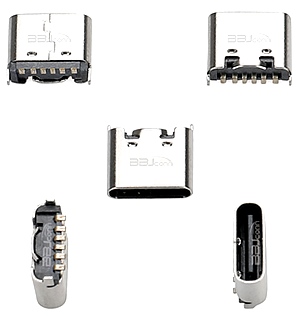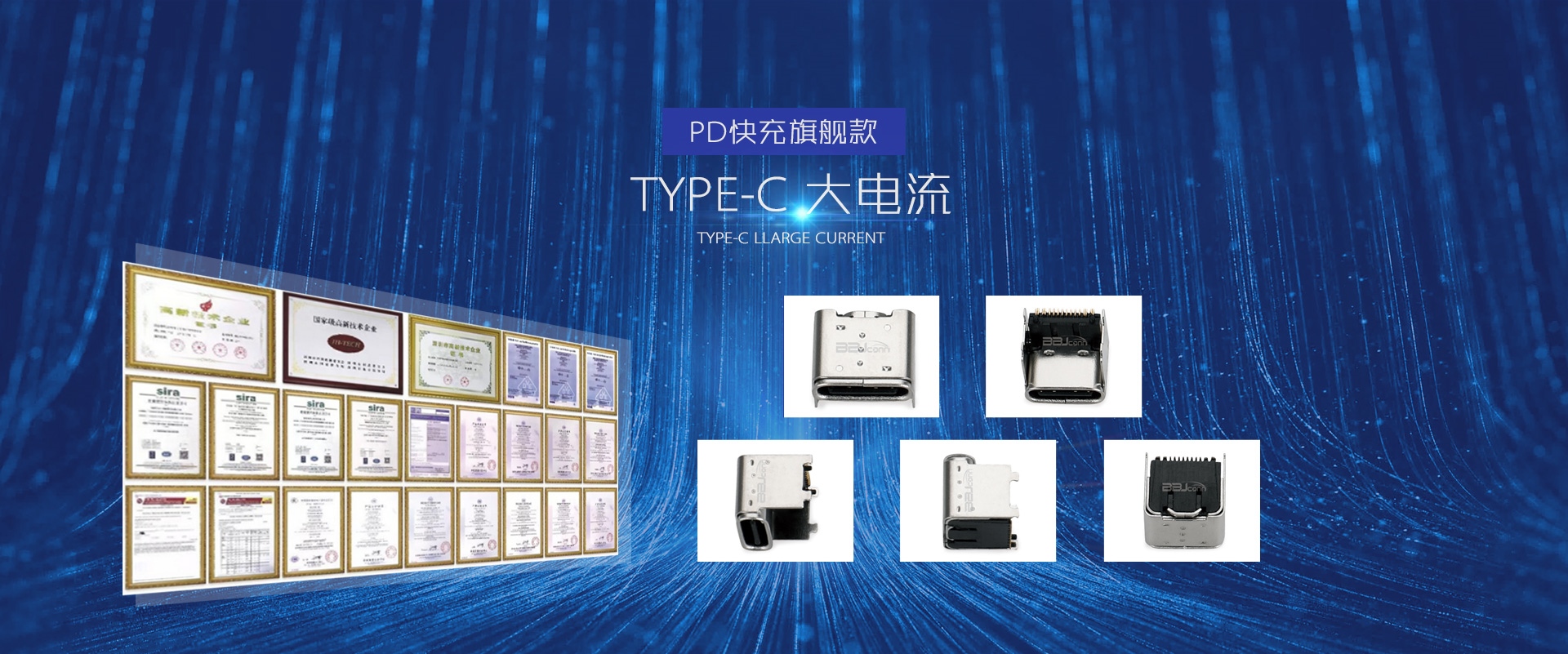Type-C vertical patch: future trend of innovative design and wide application
In modern electronic products, the USB Type-C interface has gradually become a mainstream standard due to its high efficiency, reliability and multi-function characteristics. AndType-C vertical patchAs a new connection method for the Type-C interface, it is widely used in various electronic devices due to its unique design and performance advantages. This article will deeply analyze the characteristics of the Type-C vertical patch and discuss its use in electronic products. application prospects.
Design features of Type-C vertical patch
Type-C vertical patch is a Type-C interface that adopts vertical plug-in and unplugging. Different from the traditional horizontal patch, the pin direction of the vertical patch is designed to be vertical, so that it can occupy less space on the circuit board. The layout is more flexible. This design can not only save the lateral space of the PCB board, but also improve assembly efficiency, simplify the production process, and reduce production costs. The shape and layout of the Type-C vertical patch make the design of electronic equipment more flexible. Well adapted to the needs of miniaturization and compactness.
Transmission performance of Type-C vertical patch
In addition to being innovative in physical design, the Type-C vertical patch interface also performs outstandingly in transmission performance. As a high-speed data transmission interface, Type-C supports the USB 3.1 Gen 2 standard and can achieve data up to 10Gbps. Transmission speed. At the same time, the Type-C upright patch also supports PD fast charging technology (Power Delivery), allowing the device to achieve a maximum power transmission of 100W through the USB interface, which makes it popular in smartphones, laptops and other consumer electronics products. Has been widely used.

The Type-C vertical patch interface has the characteristic of reverse insertion, which means that users do not need to worry about the wrong direction of the plug, making plugging and unplugging more convenient. This design is especially suitable for situations where quick plugging and unplugging are required, such as mobile devices and high-frequency applications. in electronic products.
Structure and stability of Type-C vertical patch
The structural design of the Type-C vertical patch has better stability and anti-interference than its horizontal version. Since the vertical design inserts the pins vertically into the circuit board, it can better avoid problems caused by poor contact and friction. Connection issues. At the same time, the electrical design of the Type-C vertical patch interface has been optimized and has lower contact resistance, thus improving the stability and reliability of data transmission.
In addition, the structure of the Type-C upright patch enables it to adapt to higher currents and wider operating temperature ranges, meeting the stringent requirements for power supply and data transmission of high-performance equipment. This high-stability design makes Type-C -C vertical patches are widely used in fields that require stable power supply and high-speed data transmission, such as smart hardware, automotive electronics, medical equipment, etc.
Installation advantages of Type-C vertical patch
The installation method of Type-C vertical patch is very flexible, supporting SMT (surface mount technology) and pin. Due to its upright design, components can be soldered directly to the surface of the PCB board, reducing space waste. Compared with traditional horizontal Compared with Type-C SMD, the Type-C vertical SMD takes up more space on the PCB board during the installation process, which is particularly important for consumer electronics products with limited space.
In addition, the welding process of Type-C vertical patches is relatively simple and can be adapted to automated production lines. Due to its standardized design, batching and standardized operations are easily achieved during the production process, further improving production efficiency and product consistency.
Application prospects of Type-C vertical patch
With the increasing demand for smart hardware, miniaturized electronic products, convenient charging and high-speed data transmission, the Type-C interface, as a connection method with high integration, fast transmission speed and standardized interface, has become an important part of future electronic product design. components. The emergence of Type-C vertical patch interface provides more design possibilities for electronic products, especially in small devices, convenient charging solutions and high-density PCB board layout, which has great potential Application potential.
In consumer electronics products such as smartphones, tablets, and laptops, Type-C upright patch interfaces have begun to replace traditional Micro USB and other interfaces and become the mainstream connection method. In addition, with the advent of 5G, the Internet of Things and automotive electronics With the rapid development of other fields, Type-C vertical patch interface will also be used in more scenarios, such as smart home equipment, vehicle charging systems and efficient data transmission systems.
With its unique design advantages, the Type-C vertical patch interface not only meets the growing functional requirements of electronic products, but also provides a more efficient solution for the production and assembly process. With the market's demand for miniaturization and high-speed transmission The demand for high-stability interfaces is increasing day by day, and Type-C direct The vertical patch interface will play an increasingly important role in future electronic products. Through in-depth analysis of its performance, design and application prospects, it can be seen that the Type-C vertical patch interface is not only a modern electronic product Innovations in connection technology also provide more possibilities for future electronic device design.
